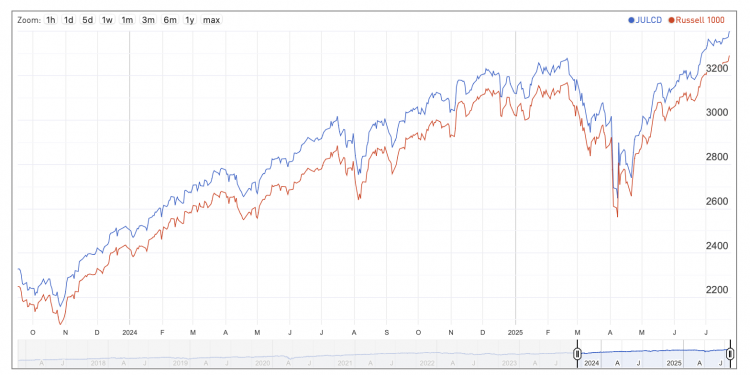The JUST Report: Are Fortune’s 100 Best Places To Work Also JUST Employers?

Fortune published their 2024 100 Best Places to Work list recently. It’s highly regarded by major employers and obviously reflects a theme we know to be a top priority for the public, so we thought it’d be fun to compare and contrast against our own JUST Jobs Scorecard, which we released last week.
Although the methodologies and purpose of the two products are very different – JUST’s scorecard is an interactive toolkit designed to help companies track and improve performance and transparency, not a list per se – the results are interesting.
In total, JUST covers 43 of the companies on the Fortune BPW list (the remainder are private or outside our Russell 1000 universe). Of these, 22 are topic or industry leaders in at least one of the six topic areas on the JUST Jobs Scorecard. And yet, only one company earned top marks for its industry on the Wages & Compensation topic, a key priority for the American public. Top companies in the Employee Wellness category in the scorecard tend to be more represented in the Fortune list compared to leaders on other topics. Half of the Top 10 on the Fortune list are represented among the companies that earned the 100 highest overall performance scores in the JUST Scorecard.
This list also marks the last time Alan Murray – their much-admired CEO who is stepping down at the end of the month – will be at the helm. Always a good friend to JUST, Alan’s thoughtful, fearless and often provocative leadership on values-led business and stakeholder capitalism is but one facet of his lengthy career. The success Fortune enjoyed under his tenure is a testament to his business acumen, too. We wish him all the best! His successor, Anastasia Nyrkovskaya, is the first woman to lead the iconic 95-year-old publication.
Be well,
Martin
Quote of the Week
“I am intimately familiar with what we offer, what’s available to employees. The extra dimension that the JUST Jobs Scorecard gave, in addition to comparability across other companies, was really looking at those programs through an external lens, because you didn’t score things based on what I told you, you scored things based on what you were able to cull out of public information. One use case for the JUST Jobs Scorecard is identifying areas of opportunity where we are doing something but not talking about it outside of our organization.”
- Kevin Cammarata, VP of Benefits at Verizon, discussing how the JUST Jobs Scorecard is being used at the company. Explore the Scorecard here.
JUST In the News
JUST Advisor Ursula Burns joins Board Member Dan Hesse’s podcast to discuss her career, her time as the first black woman CEO of a Fortune 500 company, and life lessons–most importantly, “where you are is not who you are.” Listen here.
JUST AI
Fortune reveals that startling stat that nearly nearly 3 out of 4 insurers, representing $13 trillion in assets, say they’re turning to AI to help reduce operating costs.
Must Reads
Fortune releases its 2024 “Best Places to Work” list, and highlights how the nature of the list has changed thanks to changing expectations from Gen Z workers. In their words, “Gen Z doesn’t live to work. They work to live.”
MIT releases a fascinating study showing that the majority of work today occurs in jobs and categories that were all created post-1940, and explores how professions are really created and lost over time.
The New York Times explores new data that shows that, despite the promises made by big Banks, voluntary commitment to reduce climate emissions have been ineffective so far. More inside.
The Wall Street Journal reports that Norfolk Southern has agreed to pay $600 million to settle lawsuits in connection with a toxic train derailment in Ohio early last year.
Chart of the Week
The chart comes from our deep-dive into the insights from our JUST Jobs Scorecard, particularly around stock performance. We examined the market performance of the highest-scoring companies within the top quintile, and discovered that, compared to the benchmark, we found that Scorecard leaders demonstrated substantially superior performance across nearly every Scorecard category, with the difference especially striking for companies that excelled in the Benefits and Wages & Compensation categories. Explore all the insights here.






